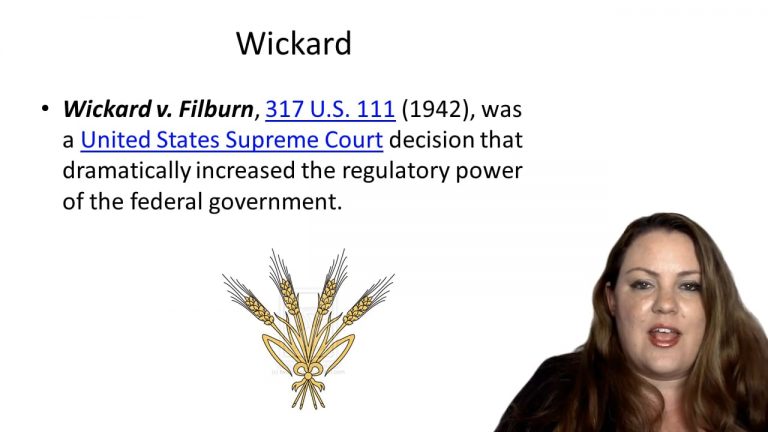SmartBrief
Confirm favorite deletion?
Constitutional Law Keyed to Choper
Gibbons v. Ogden
Citation:
22 U.S. (9 Wheat.) 1, 6 L.Ed. 23 (1824).Facts
Ogden claimed that, by virtue of a New York State steamboat license, he possessed exclusive rights to transportation between New York and New Jersey and that those rights were being infringed upon by Gibbons, who was operating steamboats on the same path. Gibbons was licensed to participate in the “coasting trade” under a federal statute and claimed that that federal license gave him the right to navigate the New York-New Jersey path. Ogden obtained an injunction to prevent Gibbons from using the same waterway. Gibbons appealed, arguing that the New York law purporting to give exclusive privilege of the waterway to Ogden conflicts with the Commerce Clause.
Only StudyBuddy Pro offers the complete Case Brief Anatomy*
Access the most important case brief elements for optimal case understanding.
*Case Brief Anatomy includes: Brief Prologue, Complete Case Brief, Brief Epilogue
- The Brief Prologue provides necessary case brief introductory information and includes:
Topic:
Identifies the topic of law and where this case fits within your course outline.Parties:
Identifies the cast of characters involved in the case.Procedural Posture & History:
Shares the case history with how lower courts have ruled on the matter.Case Key Terms, Acts, Doctrines, etc.:
A case specific Legal Term Dictionary.Case Doctrines, Acts, Statutes, Amendments and Treatises:
Identifies and Defines Legal Authority used in this case.
- The Case Brief is the complete case summarized and authored in the traditional Law School I.R.A.C. format. The Pro case brief includes:
Brief Facts:
A Synopsis of the Facts of the case.Rule of Law:
Identifies the Legal Principle the Court used in deciding the case.Facts:
What are the factual circumstances that gave rise to the civil or criminal case? What is the relationship of the Parties that are involved in the case.Issue(s):
Lists the Questions of Law that are raised by the Facts of the case.Holding:
Shares the Court's answer to the legal questions raised in the issue.Concurring / Dissenting Opinions:
Includes valuable concurring or dissenting opinions and their key points.Reasoning and Analysis:
Identifies the chain of argument(s) which led the judges to rule as they did.
- The Brief Prologue closes the case brief with important forward-looking discussion and includes:
Policy:
Identifies the Policy if any that has been established by the case.Court Direction:
Shares where the Court went from here for this case.
Topic Resources
Topic Outline

 9m 38s
9m 38s